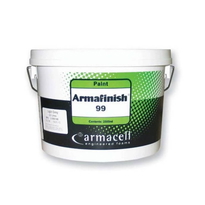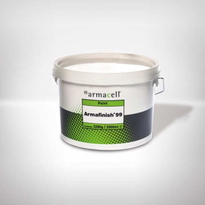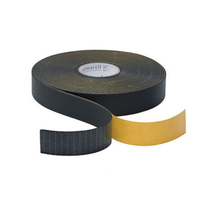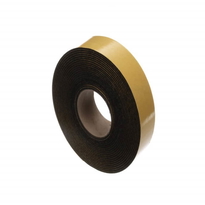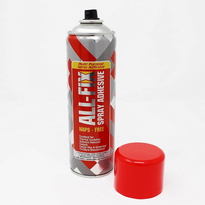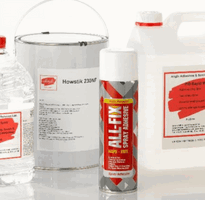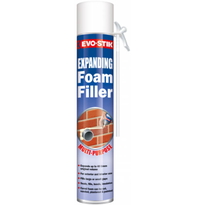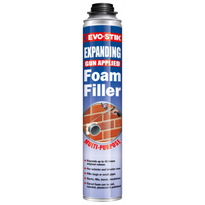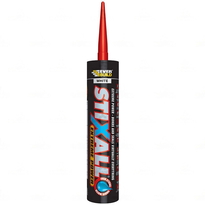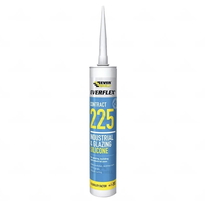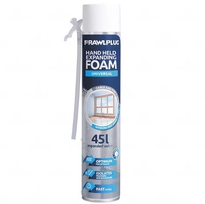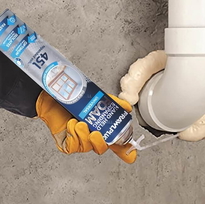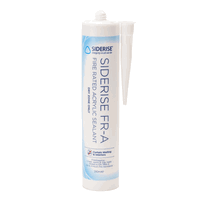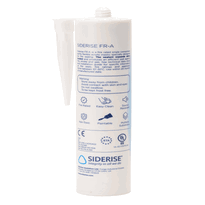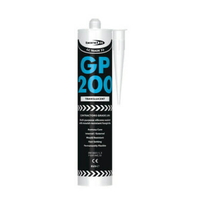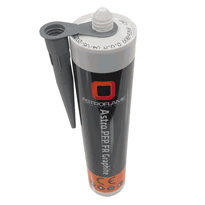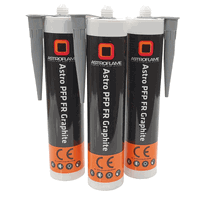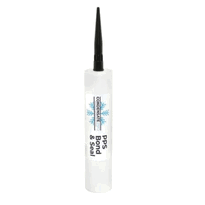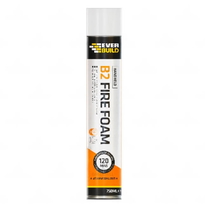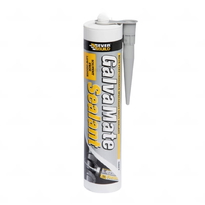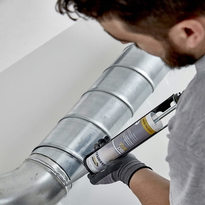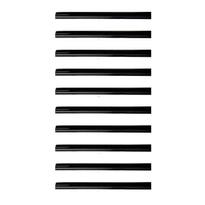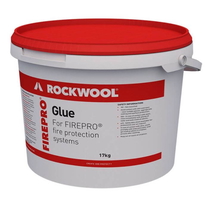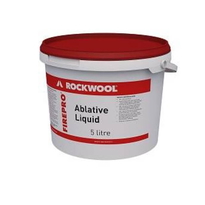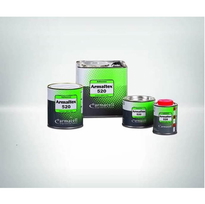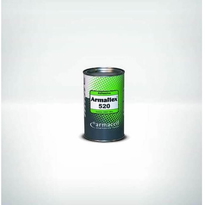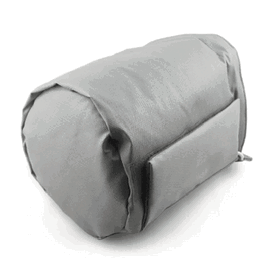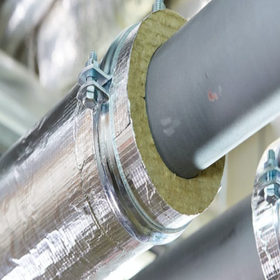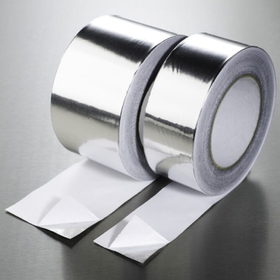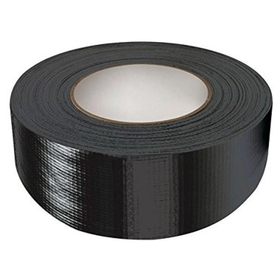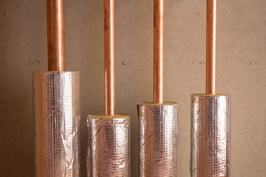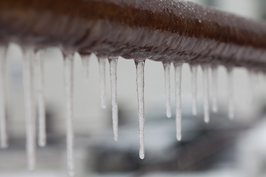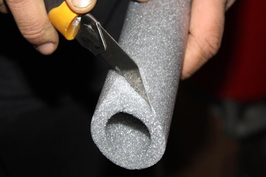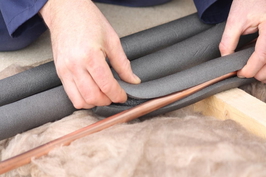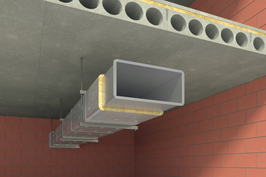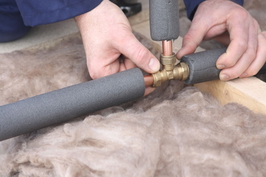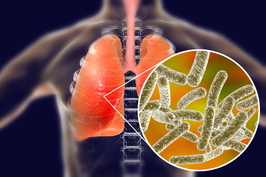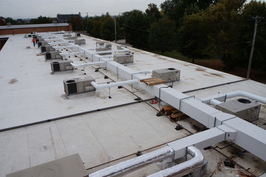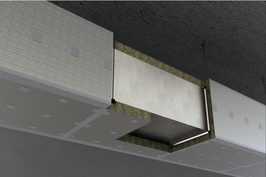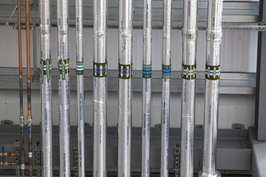Similar Categories
Types of Insulation Adhesives and Their Formulations
There are several types of insulation adhesives available, each designed for specific applications and performance needs.
Sprayable adhesives are popular for their quick tack and broad coverage on insulation materials. Solvent-based adhesives work well indoors, particularly when formulated with low VOCs to minimise fumes. Non-chlorinated options are environmentally friendly, avoiding harmful ozone-depleting chemicals.
Rapid-setting adhesives bond quickly, often within minutes, making them ideal for fast projects. Chemical cure adhesives rely on chemical reactions to create strong, durable bonds. These formulations can include synthetic resin mixtures, copolymers, and aliphatic or ketone solvents.
Many adhesives are flammable and emit a strong odour when wet, necessitating careful handling. Low VOC and non-ozone-depleting options render certain adhesives safer and more eco-friendly, addressing diverse insulation bonding needs.
Application Techniques for Effective Adhesive Bonding
Effective adhesive bonding begins with proper surface preparation, which includes cleaning and treating surfaces to ensure strong adhesion. Utilizing the appropriate application equipment, such as spray or web coating, helps achieve even coverage and optimal bond strength. The choice of method should be based on the surface characteristics and production requirements to minimize waste and maximize quality. Finally, allowing sufficient time for curing ensures the adhesive develops its full strength and durability. Proper application techniques are essential for achieving reliable and long-lasting insulation bonds.
Proper Surface Preparation
Preparing the surface properly is a crucial step for achieving a strong and durable adhesive bond. First and foremost, the surface must be cleaned thoroughly to remove oils, greases, flux, and corrosion products, which can interfere with adhesion. Surface cleaning improves bonding properties by eliminating contaminants that may weaken the bond. Mechanical methods such as sanding or sandblasting increase roughness and surface area, assisting the adhesive in gripping better. Chemical treatments, including primers and adhesion promoters, are employed for challenging surfaces to enhance bond strength. Physical techniques, such as plasma or corona treatments, elevate surface energy and improve wetting, which is vital for a good bond. Following treatment, inspection is essential to verify that all residues have been removed, preventing adhesion issues. Proper surface preparation not only enhances bond strength but also ensures the longevity of the insulation adhesive’s performance.
Optimal Application Methods
Choosing the right application method is essential for ensuring a strong and durable bond between insulation materials. Proper technique results in even coverage and reliable adhesion, which is vital for a secure installation. Parafast Insulation Adhesive can be applied using cartridges, bag-in-box, drums, or canisters, depending on the size of the project and the specific adhesive used. Spray equipment is ideal for large areas, providing a uniform coating, while maintaining a consistent applicator height helps prevent uneven application. Moving the sprayer in a sweeping side-to-side motion ensures even distribution. For smaller or irregular surfaces, using a weighted roller improves contact and adhesion. Regulating the application rate based on the material and substrate ensures adequate coverage without excess. Maintaining proper environmental conditions—such as ideal temperature and humidity—and protecting the workspace from moisture also contribute to successful application. These practices help create a strong, lasting bond that enhances insulation performance and overall safety.
Ensuring Adequate Curing
Proper curing methods are vital to ensure that insulation adhesives form strong and lasting bonds. Maintaining the right environment is essential, including controlling the temperature between 18°C and 24°C, and managing humidity levels to prevent moisture issues. Cure time varies from seconds to days based on adhesive type and process, so understanding the specific requirements of your adhesive is crucial for optimal results. Cleanliness of surfaces guarantees that contaminants don't weaken the bond. Applying the correct amount of pressure helps the adhesive make full contact with the substrate. Ventilation is also important to avoid moisture build-up and air pollution that could disrupt curing. Different adhesives require specific techniques: heat curing between 60°C to 180°C improves bonding for structural adhesives, while UV light or dual curing methods speed up processes for light-sensitive adhesives. Consistently monitoring these factors enhances curing efficiency, resulting in stronger, more reliable insulation bonds that stand the test of time.
Key Product Features in Insulation Adhesives
Key product features in insulation adhesives include strong bonding capabilities, eco-friendly formulations, and quick curing times. Many options provide reliable adhesion across different substrates while reducing environmental impact with VOC-compliant and solvent-free formulas. These features help ensure efficient application and durable results in various insulation projects across the UK. For example, products like I.S.O. Twin Pack™ and I.S.O.Stick™ are designed with environmentally friendly properties, incorporating low-GWP propellants and near-zero VOC content to minimize ecological impact.
Strong Bonding Capabilities
Insulation adhesives are designed to create strong, durable bonds across a variety of materials and conditions. Their powerful bonding capabilities ensure they hold together well, even in challenging environments. Hot melt adhesives enhance bond strength across different carrier types, while MS polymers provide high flexibility and adhesion without harmful chemicals. Polyurethane adhesives deliver reliable, moisture-resistant bonds, and SMP adhesives offer quick grip and are safe for workers. Pressure sensitive adhesives excel at bonding paper, fabric, and film materials. The table below highlights key bonding materials:
| Material | Adhesive Type | Key Feature |
|---|---|---|
| Wood | Design Polymerics | Strong adhesion |
| Metal | Water-based & MS polymers | Bonds well with metal |
| Foam | Foam Bond 60 PRO | Adheres to multiple surfaces |
| Gypsum Board | Foam Bond 60 PRO | Excellent adhesion |
These adhesives foster a sense of belonging, providing reliable solutions for various needs, especially considering their compatibility with diverse substrates that ensures long-lasting performance.
Eco-Friendly Formulations
Innovations in insulation adhesives are increasingly centred around eco-friendly formulations that minimise environmental impact while maintaining high performance.
These products incorporate renewable bio-based materials, with some, such as Tremco Low Rise Foam Insulation Adhesive Green, containing up to 48% biobased content. They utilise plant-derived polymers instead of petroleum, making them more sustainable, and are formaldehyde-free, thereby eliminating carcinogenic risks.
Furthermore, these adhesives emit low or no volatile organic compounds (VOCs), which enhances indoor air quality during installation. They achieve VOC-exempt status through water-based or reactive chemistries, ensuring compliance with regulations and reducing odour.
Advanced polymer chemistry, including elastomeric urethane bases, provides flexibility and durability, even under extreme temperatures. Certifications like USDA BioPreferred and GreenGuard validate their environmental benefits, making these formulations a responsible choice for contemporary insulation needs in the UK.
Quick Cure & Application
Fast-curing insulation adhesives are designed to bond materials swiftly, often setting in just minutes or even seconds. This rapid curing allows for quicker assembly and reduces project completion times.
Some adhesives require specific conditions, such as UV light or heat, to initiate curing, while others function effectively at room temperature without any additional steps. They're available in both single-part and two-part formulas, with two-part adhesives necessitating mixing but reacting rapidly once combined.
Many also possess expanding properties, allowing them to fill gaps effectively. Application methods vary, including gun application, straw dispensers, and sprayable or pressurised containers.
These adhesives offer excellent thermal and moisture resistance, ensuring long-lasting insulation. They're versatile and suitable for sealing gaps, attaching boards, and constructing wall or floor assemblies, making them ideal for both domestic and commercial projects in the UK.
Environmental Impact and Sustainability in Insulation Adhesive Selection
Choosing environmentally friendly insulation adhesives is vital for minimising the negative impact they've on our planet. Some adhesives, such as epoxy resins, can harm aquatic environments over time, while formaldehyde is a carcinogen that affects both health and ecosystems. Insulation plays a critical role in reducing heat transfer, making the selection of sustainable adhesives even more important for overall building performance. Natural adhesives and non-toxic options provide safer, more sustainable choices, helping to minimise environmental risks. Utilising renewable insulation materials and transparent sourcing can further support eco-friendly practices. Conducting life cycle analysis (LCA) aids in identifying adhesives with lower overall impacts, and sustainable manufacturing reduces the carbon footprint. While these greener options may incur higher initial costs, they often lead to savings and health benefits in the long run. Prioritising eco-conscious adhesives aligns with global efforts to protect our environment and promotes a shared sense of responsibility in construction across the UK.
Performance Attributes and Curing Characteristics
Curing speed and bond strength are key factors that affect the performance of insulation adhesives.
Some adhesives dry quickly, allowing for faster assembly, while others require more time to develop their full strength.
Understanding how these variations impact durability aids in selecting the appropriate adhesive for specific insulation requirements.
Curing Speed Variations
The speed at which insulation adhesives set and develop strength varies widely depending on their chemistry and application conditions.
Fast-cure adhesives often include catalysts or reactive ingredients that accelerate polymerisation, with some formulations curing in just seconds using UV light.
Factors such as temperature and humidity play significant roles—higher temperatures speed up curing, while moisture-sensitive adhesives rely on ambient humidity.
Surface preparation, including cleaning or priming, can significantly reduce curing time, particularly for fast types.
Some adhesives generate heat during curing, which accelerates cross-linking, while others require longer times to penetrate deep joints.
Industry applications, such as automotive assembly, favour quick-curing adhesives to streamline production.
Bond Strength Durability
Bond strength durability plays an essential role in the overall performance of insulation adhesives, particularly over time and under various conditions.
Adhesives containing 10-MDP demonstrate better long-term bond strength compared to those without it, even following ageing. The presence of hydrophilic components such as HEMA or silane can accelerate interface breakdown, weakening bonds more rapidly.
Chemical bonding, like that between 10-MDP and surfaces, helps resist deterioration more effectively than simple mechanical adhesion. Various types of stress, including peel, shear, and tensile, assess different bond strengths, particularly under dynamic forces.
Proper surface preparation, including cleaning and etching, is fundamental for maintaining bond durability. Employing effective curing techniques and selecting the appropriate resin components can further enhance long-term performance, ensuring reliable insulation bonds over time.
Industry Standards, Certifications, and Available Packaging
Industry standards, certifications, and packaging options play a crucial role in ensuring the quality and safety of insulation adhesives. Standards such as ASTM and ISO establish clear guidelines for product performance, safety, and environmental impact, fostering a sense of trust among users.
Certifications like GREENGUARD ensure that adhesives comply with low-emission requirements, promoting healthier indoor environments. Packaging options vary from spray forms and pastes to rolls and bulk containers, making it easier for both small and large-scale projects in the UK to find suitable adhesives.
Quality management systems such as ISO 9001 help manufacturers maintain consistent manufacturing practices. By adhering to these standards and offering a diverse range of packaging, companies cultivate a shared sense of reliability and belonging, ensuring that everyone can access high-quality insulation adhesives that meet their specific needs.
Choosing the Right Adhesive for Your Insulation Project
Choosing the right adhesive for an insulation project depends on several key factors. The type of insulation and surface conditions are important, as different adhesives suit different materials.
Spray adhesives are excellent for large projects because they're applied quickly and cure rapidly. Foam adhesives are particularly effective on uneven surfaces, as they fill gaps and enhance insulation performance. Pressure-sensitive adhesives are ideal for rolled insulation due to their ease of application.
Environmental factors such as moisture resistance, temperature range, and UV exposure also play a significant role in the choice of adhesive. For outdoor or humid areas, moisture-resistant adhesives are preferable.
Additionally, consider the size of the project and your budget; spray adhesives tend to be cost-effective for larger jobs, while fast-curing options can save time.
Selecting the appropriate adhesive ensures a durable, effective, and safe insulation setup.
Safety Considerations and Handling Precautions
Ensuring safety during insulation adhesive applications is essential to protect workers from potential hazards. Proper precautions include wearing full protective equipment such as chemical-resistant gloves, goggles, and fire-resistant clothing.
Using self-contained breathing apparatus (SCBA) is vital when spraying or aerosolising adhesives, and good ventilation is necessary—preferably outdoors or in well-ventilated areas, with vapour extraction systems for larger projects.
It’s also important to prevent skin contact to avoid reproductive hazards and to prevent mist formation during dispensing.
Storage must be kept below 25°C, away from heat and oxidising agents, with caution around pressurised containers.
Adhering to these safety practices minimises risks such as inhalation, skin contact, and fire hazards, promoting a safer work environment for everyone involved.
Innovations and Advancements in Insulation Adhesive Technologies
Advancements in insulation adhesive technologies are steadily transforming the formulation and application of these products in the UK. New formulations now offer enhanced thermal resistance, durability, strength, flexibility, and sustainability.
There's a strong emphasis on bio-based and low-VOC adhesives, helping to meet modern environmental standards. These innovations prioritise the balance between high performance and eco-friendliness, aligning with industry goals for sustainability.
Next-generation adhesives also boast longer shelf lives and simpler application processes, which expedite manufacturing and reduce waste.
Cutting-edge application methods, such as cylinder technology, enhance dispensability and precision. Automation and digital tools are making installations more efficient, particularly with lightweight materials such as fabrics and fibreglass.
Environmental Certifications and Compliance for Insulation Adhesives
Environmental certifications and compliance standards play a significant role in ensuring that insulation adhesives meet contemporary safety and sustainability requirements. These standards assist manufacturers in developing products that protect indoor air quality and reduce environmental impact.
For instance, regulations such as the CDPH Standard Method v1.2 evaluate emissions, while certifications like GREENGUARD and UL ECOLOGO verify low emissions and sustainable practices. Insulation adhesives that comply with programmes like MAS Certified Green and Clean Air GOLD stand out in the market, fostering trust and credibility among consumers.
These standards also aid companies in adhering to regulations such as those set forth by the Environment Agency in the UK. By opting for certified products, builders and consumers contribute to healthier indoor environments.
Ultimately, environmental certifications promote a sense of belonging among those committed to sustainable living and responsible manufacturing practices.
Conclusion
Choosing the right insulation adhesive depends on the specific needs of the project, including environmental standards and performance requirements. Understanding the different types, application methods, and safety measures ensures effective bonding and long-lasting results. Advances in technology continue to enhance sustainability and product features. By selecting certified, environmentally friendly adhesives and adhering to proper handling procedures, one can achieve optimal insulation performance while minimising environmental impact. Proper knowledge and careful selection are essential for successful insulation projects in the UK.
